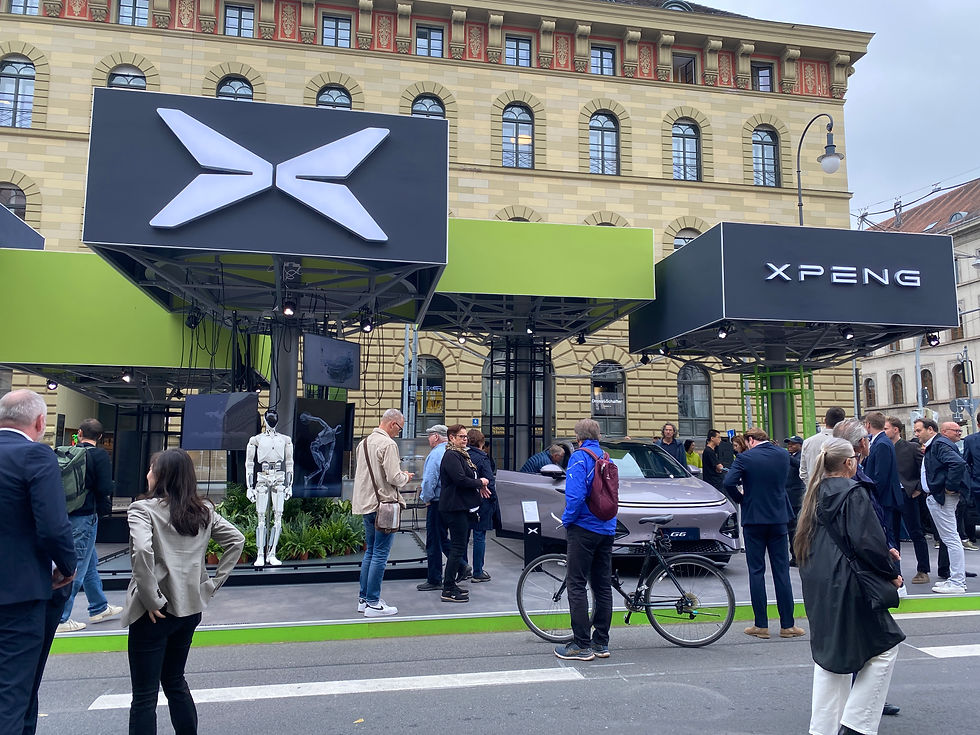European Electric Car Report July 2021 highlights
- Matthias Schmidt

- Aug 24, 2021
- 3 min read
Key points:
SUV now 50% share of BEV market
Italian new plug-in volumes now larger than Norway's
UK plug-in Parc moves ahead of Norway, and a whisker behind France
Chinese OEMs continue to control 4% of the BEV market equal with Japanese OEMs
European backdoor being left open for Chinese manufacturer entrance, while benefitting from a different investor culture
Take a look at the exhibitors at Europe's first major auto show – Munich's IAA – since the COVID pandemic struck, opening its doors September, and some Chinese names jump out. Great Wall Motors' WEY/ORA brands – likely to announce EV European debuts – and Xpeng, already present in Norway, are in attendance.
Back to the present day, and for a second consecutive month, Chinese OEMs, led by SAIC's MG and Geely's Polestar brands accumulated a 4 per cent West European BEV car market share.
Again, this was equivalent to all Japanese BEV models during the same month.
More than ten Chinese brands are now present in Europe's passenger car market, achieving less than 1 per cent market share across all powertrains between January and July.
Rather than competing to gain market share in the total car market across all fuels, Chinese OEMs are homing-in on the BEV market, where there are arguably fewer barriers to entry, as exhaust regulations fall away.
However, safety hurdles remain – a notable stumbling block of previous attempts.
While Xpeng, Nio, Aiways and BYD (1,500 units arriving by the end of 2021) will all be present in a number of European markets by the end of 2021, they will likely be joined by ORA and WEY from 2022.
Main protagonists for now, Polestar and MG, accounted for 19,800 of the 20,800 Chinese BEVs registered in Europe so far this year.
Norway has led the Chinese path, witnessing almost every tenth (4,680 units) new BEV come from Chinese OEMs this year.
With traditional OEMs more than happy to reveal mid-to-long-term EV plans from
2025 onwards, short-term EV perspectives remain cloudy.
Profitability trumps volume... for incumbent OEMs for now
CEOs from Renault, Daimler or VW are keen to highlight two key points: The internal combustion engine will play a key role in financing the transition to electric vehicles going forward, and the most profitable ICEs will be the main focus – especially during the semiconductor shortage – as profitability trumps volume.
Many incumbent OEMs are waiting until at least 2025 when the next EU CO2 cut of 15 per cent will take place, beginning a genuine EV push from that point onwards, at which point the tables should turn back towards volume again, as scale is key to profitability from EVs.
In short, in a similar fashion to the left ajar door for Tesla between 2015-2019 – while
traditional OEMs trod water with their electric vehicle strategies, sticking to self-imposed
profitability corridors – this current half-decade could see a similar situation, but where the new entrants are coming from Chongqing rather than California.
But what about the image of "made in China"?
European Tesla shipments are overwhelmingly shifting to Sino-manufactured models, as German production isn't likely to begin until October at the earliest, according to CEO Musk.
Chinese models from BMW and Volvo have been entering European roads, with Dacia's Spring also shipped from China.
Chinese BEV exports to Europe are likely to touch 100,000 units this year.
According to ACEA data in 2020 170,244 Chinese manufactured vehicles entered European roads accounting for 5.6% of imports.
Capital markets appear to be influencing strategies too.
Traditional OEMs, backed by traditional investors remain under pressure to meet key KPI profitability corridors, causing them to limit lower profit EVs currently, while more forgiving investors from newly christened IPOs are much more accepting to forge ahead with non-profitable growth driven freedom.
Perhaps the tagline to the Munich Autoshow: "What will move us next?" will prove to be more than organisers reckoned with.
May also interest you: June Report: European Electric Car Report June 2021 highlights... click here for the story
*Western Europe 18 Markets: EU Member States prior to the 2004 enlargement plus EFTA markets Norway, Switzerland, Iceland, plus UK






Comments